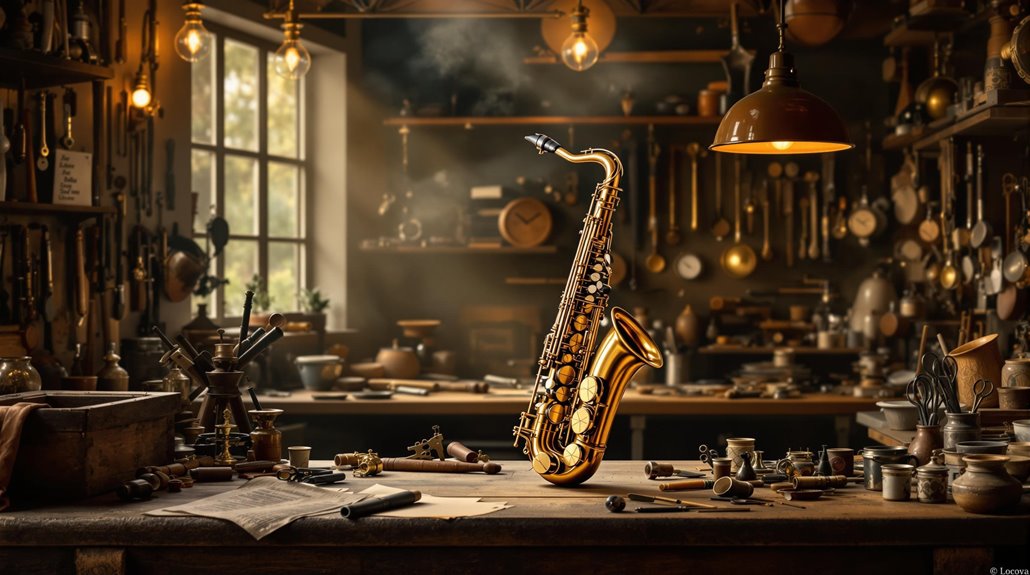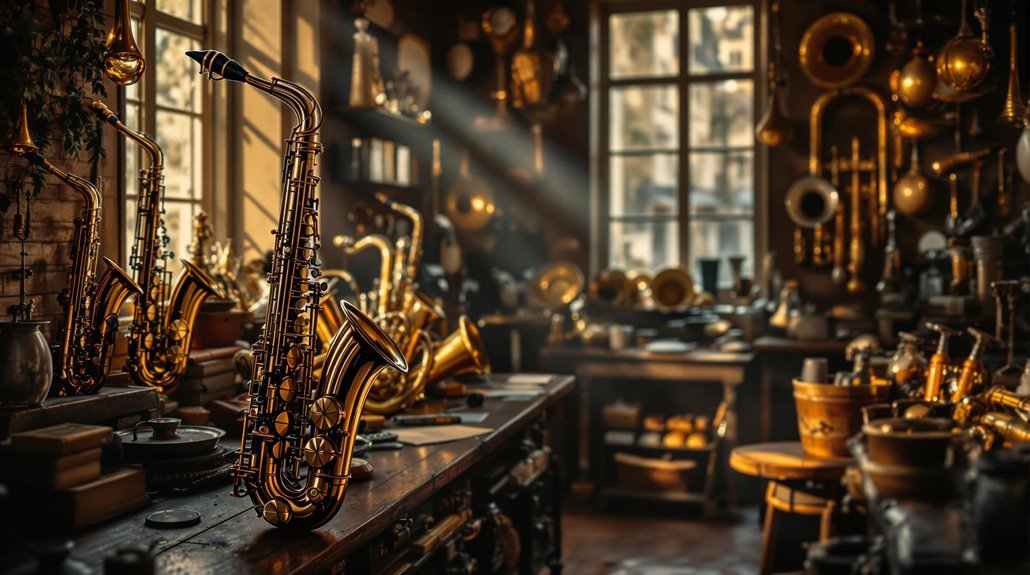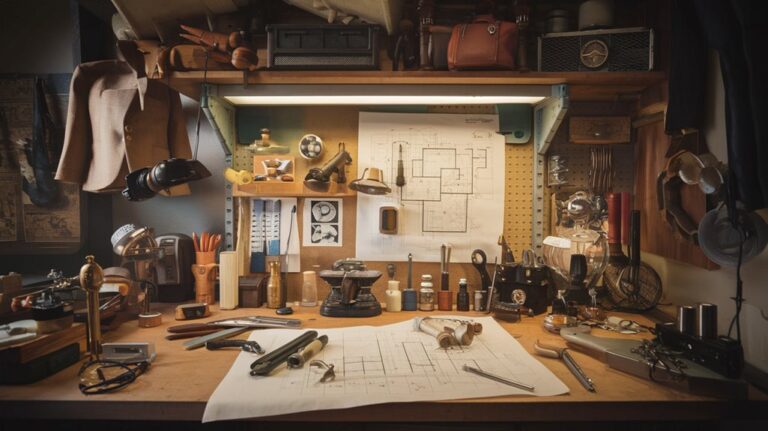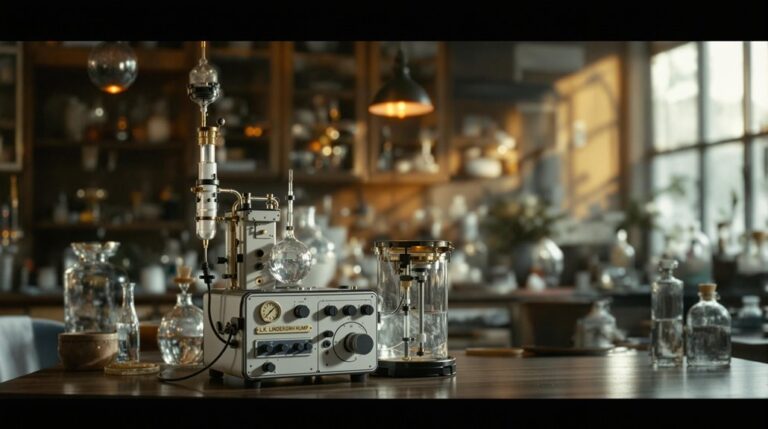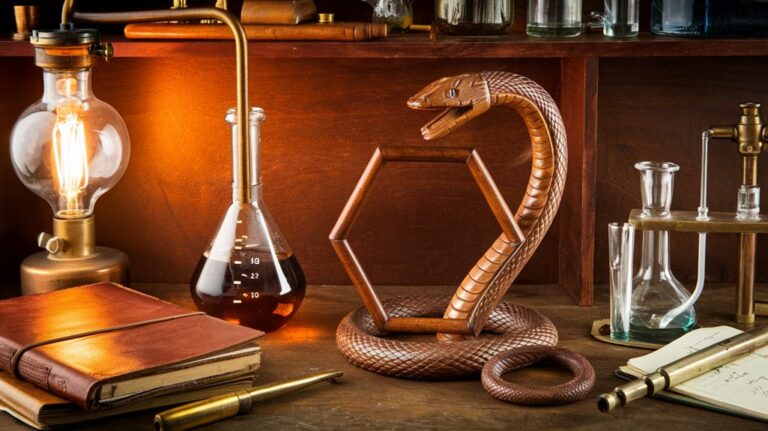Adolphe Sax: The Calamity-Filled Life of an Inventor
You've probably heard a saxophone's soulful wail in jazz clubs or its powerful punch in rock songs, but you might not know the incredible story behind its creator. Adolphe Sax survived a series of near-fatal accidents as a child, battled ruthless competitors as an adult, and faced financial ruin more than once. Yet through it all, he managed to revolutionize music with an invention that would outlive his many misfortunes. His tale of persistence begins in a small Belgian workshop.
The Nine Lives of Young Antoine
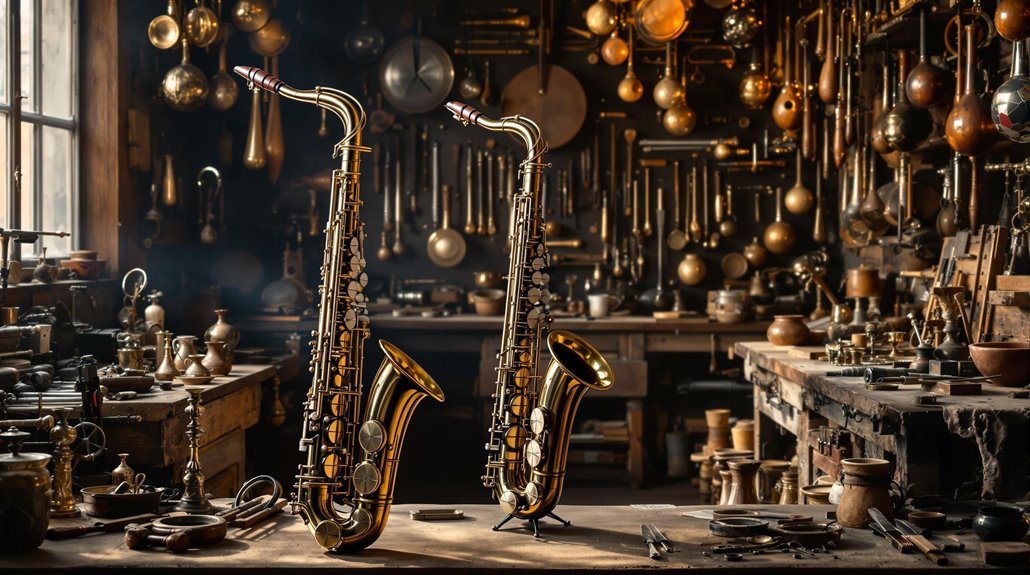
Despite his later success as an inventor, Adolphe Antoine Sax's childhood was marked by near-death experiences so frequent that neighbors nicknamed him "little Sax, the ghost."
From falling three stories onto stone to drinking sulfuric acid, young Antoine survived an astonishing series of accidents that would've killed most children.
You'd hardly believe the catalog of calamities: he swallowed a pin, suffered burns from a gunpowder explosion, and fell onto a searing hot frying pan.
His childhood resilience was tested further by multiple drowning incidents and poisonings from varnish fumes in his family's workshop.
The accident-prone boy endured repeated blows to the head, including a cobblestone impact.
His mother became convinced he was "condemned to misfortune," yet somehow Antoine survived each brush with death. Growing up in his father's workshop, where musical instruments were crafted, likely influenced his future career despite the dangers he faced there. His neighbors in Dinant were so astonished by his survival of these incidents that they began calling him the ghost-child from Dinant.
A Musical Dynasty Takes Shape
All those childhood mishaps might've taken young Antoine's life, but they couldn't dampen his destined path in music.
Born into a rich musical heritage, he was surrounded by the sights and sounds of instrument making from his earliest days. His father Charles-Joseph's workshop buzzed with the creation of woodwinds, brass, and strings, while his mother contributed her own design expertise.
You'll find the roots of Adolphe's genius in this family craftsmanship. By age 15, he was already entering his own instruments in competitions, having mastered both performance and design. Beginning around this age, he focused intently on improving the clarinet.
His parents were particularly known for their work on modified French horns, showcasing the family's innovative spirit in instrument design.
He learned the trade in his father's workshop, which had grown into a full-fledged factory supplying Belgium's military bands. The Sax name became synonymous with innovation, as both father and son registered numerous patents for their improvements.
Paris: The City of Innovation and Rivalry
When Adolphe Sax arrived in Paris in 1842, he entered a city buzzing with unprecedented innovation and fierce competition.
You'd find a metropolis that had already proven its innovative spirit through achievements like the world's first street lighting and the Montgolfier brothers' pioneering hot air balloon flight.
The innovation dynamics of Paris were extraordinary, with the city serving as France's powerhouse of creativity and technical advancement. His groundbreaking hybrid musical instrument, combining woodwind and brass elements, would soon challenge traditional instrument classifications. Paris's network of 165,500 researchers fueled the city's reputation as a hub of invention and discovery.
As an inventor, Sax faced intense rivalry challenges in a landscape teeming with brilliant minds and ambitious projects.
The city's educational infrastructure, featuring prestigious engineering schools and research facilities, fostered a competitive environment where inventors had to fight to stand out.
For Sax, this meant traversing a complex web of established musicians, instrument makers, and critics who'd scrutinize his every innovation.
Birth of the Saxophone Revolution
In the vibrant and competitive atmosphere of 1840s Paris, Adolphe Sax's revolutionary vision took shape. His quest to bridge the gap between woodwinds and brass led to the saxophone's evolution, combining a bass clarinet mouthpiece with an ophicleide body. By 1841, he'd created his first prototype: the baritone saxophone. His creation aimed to combine the power of brass instruments with woodwind agility.
You'd be amazed at how Sax's invention challenged musical boundaries. His design featured a unique conical bore and metal body, yet it used a reed like woodwinds.
The saxophone's musical integration gained momentum after its 1844 Paris Industrial Exposition debut, with composer Hector Berlioz's early praise helping to establish its credibility. While orchestras were slow to embrace it, the instrument found its home in military bands and later revolutionized multiple genres, from classical to jazz. Despite its success, Sax spent over twenty years in legal battles defending his patents.
Battles in Business and Health
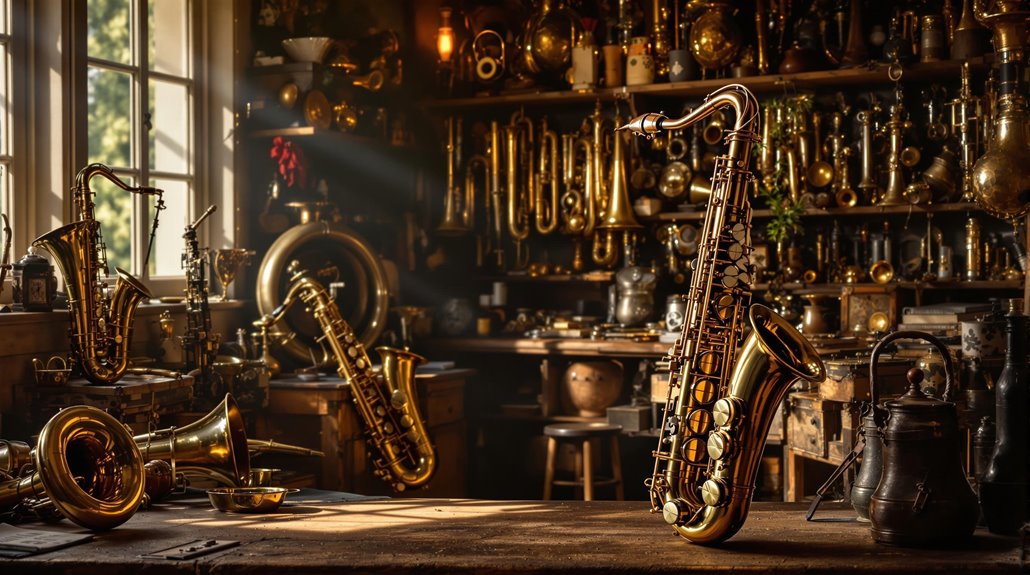
Despite his groundbreaking invention, Adolphe Sax's path to success became a harrowing journey through financial ruin, legal battles, and life-threatening illness.
You'd be hard-pressed to find an inventor who faced more adversity. His financial resilience was tested repeatedly as he declared bankruptcy three times, while competitors deliberately sabotaged his business by selling counterfeit instruments at half price.
His legal perseverance was challenged through decades of patent disputes, forcing him to temporarily withdraw his saxophone patent. As if these setbacks weren't enough, he battled severe lip cancer that left him unable to eat solid food for five years. His resilience was supported by distinguished composers like Emmanuel Chabrier, Jules Massenet, and Camille Saint-Saëns who provided assistance during his hardships.
Even his factory wasn't safe – he endured theft, suspicious fires, and attempted shootings. Yet through it all, Sax persisted, ultimately living to age 79 despite his numerous brushes with ruin. Against his father's wishes, he had moved to Rue St. Georges in Paris to establish his own instrument-making shop, determined to forge his own path despite the challenges ahead.
The Lasting Symphony of Sax's Legacy
The sheer magnitude of Adolphe Sax's contributions to music far outweighs the hardships he endured.
You'll find his influence everywhere, from the saxophone's versatility in jazz clubs to concert halls, and from military bands to rock concerts. His invention revolutionized musical expression by combining the best qualities of brass and woodwind instruments.
Early instrument making began in his youth, as he demonstrated remarkable talent for crafting musical instruments from a young age.
Beyond the saxophone, you can trace Sax's genius through his 46 patented inventions, including the saxhorn family and improvements to the bass clarinet.

